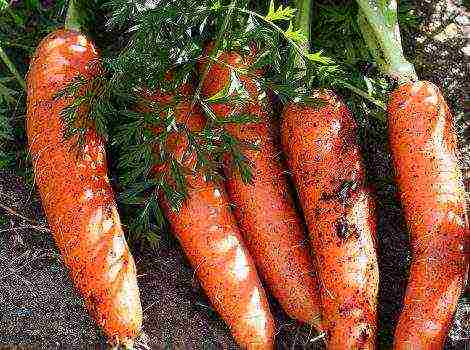Content
- 1 Timing and varieties
- 2 How to plant carrots before winter
- 3 Advantages and disadvantages of winter landing
- 4 Benefits of Getting Early Carrots
- 5 How to choose the right place
- 6 Better early carrot varieties
- 7 Planting dates for carrots
- 8 Sowing technology
- 9 The difference between winter planting of vegetables and spring
- 10 When planting carrots as seeds in open ground
- 11 How to plant carrots outdoors
- 12 Care and cultivation of carrots
- 13 Diseases and pests of carrots
Carrot refers to winter-hardy vegetables that can be sown both before winter and in spring. Cold-resistant crops that are not afraid of the winter "extreme" also include: winter varieties of garlic, black onions, parsley, dill, celery, beets. There are a number of differences in growing a crop in two ways.
Wise gardeners who enjoy eating juicy young carrots starting in June know that winter sowing of culture has a number of significant advantages.
- Root crops are harvested in June. At the beginning of summer, when there are not enough vitamins in foods, and the body needs them so much, fresh roots will appeal to both children and adults.
- In autumn, especially late, when the site is practically cleaned and all gardening activities are completed, there is much more free time than in early spring, when there is a great deal of work in the garden.
- Saving landing space. The garden, freed from carrots in the summer, can be fully used for growing many crops: leafy greens, cabbage, legumes, beets. That is, 2 full-fledged crops are obtained from one plot of land. Especially considering that fertilizers (organic and mineral) were applied under the carrots.
- Root crops planted in autumn grow somewhat larger and have a higher sugar content. The fact is that, germinating in early spring, when the soil is still saturated with melt water, the plants receive additional nutrition.
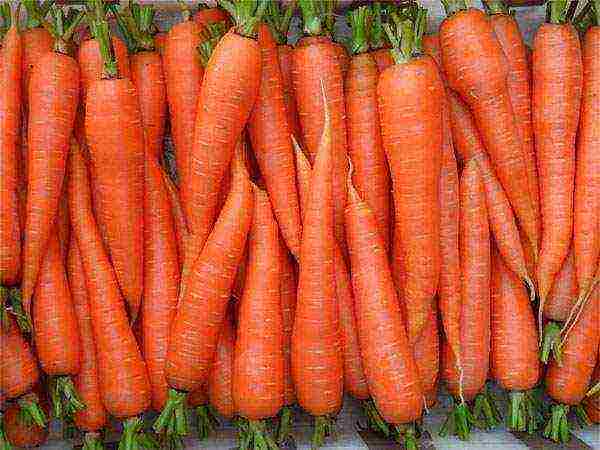
The disadvantages of cultivating carrots using winter sowing can be attributed to the low keeping quality of grown root crops. But if you need carrots for long-term storage, then several beds can be made in the garden. On one of them, sow a crop in late autumn, and use root crops for food throughout the summer, and on the rest, grow a vegetable in the traditional way (spring sowing). Then you can prepare carrots for future use and enjoy juicy fruits until next spring.
Carrot varieties should be selected marked early maturing and mid-season... Bunch carrots have proven themselves best. A rich harvest is given by early ripening and frost-resistant varieties, with high germination, in particular:
- Vitamin 6,
- NIIOH 336,
- Moscow winter A-545,
- Shantane - 2461,
- Incomparable
- Losinoostrovskaya 13.
Experienced gardeners are advised to pay attention to the variety. Nantes 4, forming a cylindrical root crop with a blunt end and rather lush greenery.
Pelleted seeds are not suitable for sowing in the fall; you should choose only untreated planting material. Unlike sowing in spring, 20-25% more seeds will be required (some of them freeze in winter, some do not germinate).
Before planting carrots before winter, the seeds should not be soaked and germinated - dry seeds should not germinate in the fall, since with the first frost, the germinated plants die, their task is to overwinter in the ground and actively go into growth in the spring.
Experts say that carrots are not picky about their predecessors, but it feels best on the lands where potatoes, garlic, onions, tomatoes, cucumbers and melons were grown before. The carrots can be returned to their original place only after a few years. This is due to the accumulation of carrot fly larvae in the ground - the main pest and enemy of culture.
Carrots grow well on loose soils... The land for a plot with a crop should be fertile, cultivated, light, well-lit and early free of snow. Also, the area for the garden bed should be flat so that the seeds are not carried away from the soil along with the melt water. Competent soil preparation is the key to the future harvest.
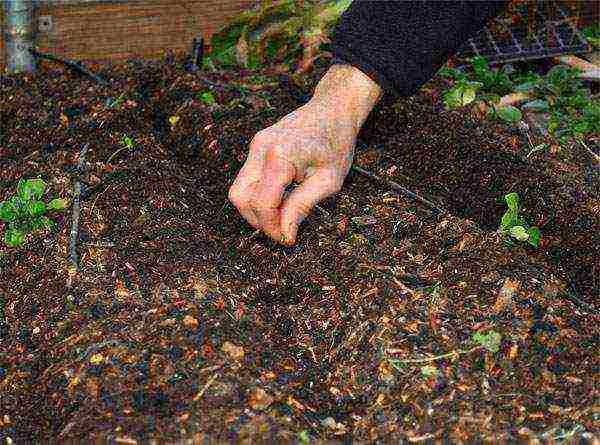
As soon as the land is freed from its predecessors, all available plant residues are removed from the garden. This is important, since most of the pests of the garden and vegetable garden overwinter on them.
Then the site is dug to a depth of about 27-30 cm, with the simultaneous introduction of mineral (potash, nitrogen and phosphorus) and organic (peat compost and humus) fertilizers. The amount and composition of fertilizers depends on the fertility of the soil in your area.
For example, when there is a lack of phosphorus in the ground, the roots are formed curved, irregular in shape. These measures improve the structure and looseness of the soil, and also leads to the removal of small weeds. Fresh manure is not applied for carrots. In those areas where the planting of a fresh mullein was carried out, carrots can only be planted after 2 years.
At the beginning of October, the site for sowing carrots in winter is loosened, the grooves are made with a depth of 3 to 5 cm, the bottom is slightly compacted and left in this form until the onset of frost. Separately, in bags, soil mixture is harvested for filling furrows, as well as mulching materials. The bags should be stored in rooms with freezing temperatures so that the ground is not frozen and dry.
The soil should freeze to a depth of about 5 cm. In the middle lane, carrots are sown in the last days of November, but the timing may shift, depending on unpredictable weather conditions. For the exact date of planting carrots, see the lunar calendar.
If snow falls, then it should simply be removed from the garden and sowing begin. The soil is poured into the prepared furrows by 1-2 cm, so that on loose soils the seeds are sown to a depth of 1.5 to 2 cm, and on dense soils - by 1 cm.
The seeds are densely sown, covered with pre-prepared soil, and then the bed is insulated with organic mulch (compost, humus, peat) with a layer of 2-3 cm. At the first precipitation, it is advisable to shovel the snow onto the garden bed. And in winters with little snow and in areas with constant droughts, after that, it is advisable to carry out measures on the beds to retain snow, for example, cover the soil with a layer of large mulch (spruce and pine spruce branches, large branches, fallen leaves).
In early spring, after the snow melts, large mulch is removed from the beds. To accelerate the ripening of carrots, low arcs are installed above the bed, on top of which a film or non-woven material is fixed. The cover is removed when the weather is stable (average daily temperature above + 15 ° С).
When the earth dries out, watering is required. With a lack of moisture in the soil, crop growth slows down significantly. When mass crop shoots appear, it is necessary to remove the cover and begin regular weeding and loosening of the soil to destroy the soil crust. IN at the beginning of the growing season, it is desirable to enrich the soil nitrogen-containing and other mineral compounds.
It is not recommended to introduce organic matter during the growing season of carrots.The most favorable time for applying organic fertilizers is immediately after harvesting or during autumn digging. The first feeding is carried out with the following composition for a standard bucket of water:
- double superphosphate (15 gr),
- urea (15 gr),
- potassium nitrate (15 gr).
Second feeding spend 3-4 weeks: potassium chloride (20 g) and a complex composition of mineral fertilizers (20 g) in a bucket of water. One bucket is enough for watering 2 sq. meters of the garden.

Further care for winter carrot plantings is no different from caring for a crop planted in spring. A week or two after the appearance of friendly young shoots, the beds should be thinned, leaving a distance between the plants at least 2 cm.After 3 weeks, the thinning is repeated, and the distance is maintained about 4 cm.
To avoid attracting carrot flies, it is advisable to shed plantings with deterrent compounds. Further carrot care consists in regular control of weeds and crop pests.
Carrots planted before winter are dug out, around mid-July, at a time when the varieties planted in spring are just ripening. To use carrots for food, it is not necessary to wait for the technical ripeness of the fruit, the roots can be pulled out from mid-June, when their diameter reaches the thickness of a finger.
Subject to all the rules of cultivation, in the middle of summer you will get an excellent crop harvest. Bountiful harvests for you!
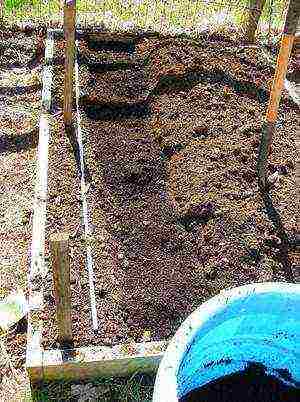 Early spring is the hottest time for all gardeners. In order not to be left without a harvest in the fall, you need to have time to plant and sow so many things! And carrots are no exception. In any vegetable garden, this vitamin and healthy vegetable is grown, and in what dishes it is not used. How tasty it is right from the garden!
Early spring is the hottest time for all gardeners. In order not to be left without a harvest in the fall, you need to have time to plant and sow so many things! And carrots are no exception. In any vegetable garden, this vitamin and healthy vegetable is grown, and in what dishes it is not used. How tasty it is right from the garden!
It is usually sown in the fall. Is it possible to plant carrots before winter to free up precious spring time for other work? If you do not know how to do this, then you can ruin the entire crop in the bud. But many gardeners have already successfully begun to master the method of winter sowing of carrots. This effective technique allows you to get a harvest two or even three weeks earlier than the earliest varieties, which were planted in spring, grow. Seeds during winter planting receive more moisture, so root crops usually grow larger and more juicy.
Timing and varieties
Planting carrots in autumn before winter has its own characteristics. This concerns the determination of the optimal timing of sowing seeds and the selection of cold-resistant varieties suitable for different climatic zones.
When to plant carrots before winter
Determine the correct timing of sowing seeds sometimes it can be quite difficult... So that the crops do not die, you need to wait for the establishment of a constant air temperature in the region from zero to plus three degrees. It is important that the carrots do not have time to germinate before the onset of cold weather. And if forecasters promise warming, then it is necessary to wait with sowing.
Depending on the climatic zone, the planting dates for carrots before winter stretch from mid-October for the northern regions of the country to the first half of November for the middle zone and the Urals. By this time, the soil must have already begun to freeze, and thaws must be excluded. Autumn temperature fluctuations good for germination, but will become detrimental to the germinated seeds. In the ground, the seeds should only swell, but they will not hatch and germinate, therefore the most favorable sowing period begins a week before the arrival of real cold weather.
Same
When to sow carrots before winter can be determined by favorable weather conditions. But there are some borderline points when to plant a crop is not worth starting:
- Too early, when the temperature is still above zero;
- It's too late when the temperature gets below minus five degrees. The seeds fall into very cold ground and can die, and in the spring the plant's development will be slowed down. And working in the ground at sub-zero temperatures is inconvenient.
Carrot varieties
For winter sowing, you can plant ordinary varieties that are sold in bags. They choose early or mid-season, cold-resistant. Taking into account the possible partial death of seeds, their consumption is necessary increase percent by 25-30.
For sowing carrots before winter, you can use the following varieties:
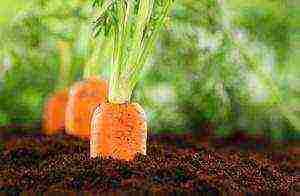 Nantes 4 is a very popular cold-resistant variety. It ripens early and gives a stable harvest of a juicy tasty root crop, even on heavy soils, suitable for all climatic zones, but prone to flowering;
Nantes 4 is a very popular cold-resistant variety. It ripens early and gives a stable harvest of a juicy tasty root crop, even on heavy soils, suitable for all climatic zones, but prone to flowering;- Vitamin 6 is a very productive variety, characterized by high keeping quality and excellent taste. It can be sown everywhere, it is quite resistant to flowering;
- Losinoostrovskaya 13 - very suitable for the northwest of Russia. Medium early and very tasty, has good keeping quality, resistant to flowering;
- NIIOH 336 is a frost-resistant variety, well suited for northern zones and zones of risky farming. Resistant to flowers;
Such proven winter varieties as Moskovskaya Zimnyaya, Tushon, Shantane-2461, Samson, Incomparable and others can be added to this list.
How to plant carrots before winter
 Before sowing seeds, you need to take care about proper soil preparation... This is taken care of immediately after harvesting the previous crops. The earth is dug deep in advance, choosing weeds and roots. Nitrogen fertilization is not recommended. Their excess leads to deformation of root crops, cracking. Fresh manure will also have a negative impact on crops. Superphosphate and potash fertilizers are added. With increased acidity of the soil, add dolomite flour. If the site is loamy or heavy earth, then it is good to dig it with the addition of sand.
Before sowing seeds, you need to take care about proper soil preparation... This is taken care of immediately after harvesting the previous crops. The earth is dug deep in advance, choosing weeds and roots. Nitrogen fertilization is not recommended. Their excess leads to deformation of root crops, cracking. Fresh manure will also have a negative impact on crops. Superphosphate and potash fertilizers are added. With increased acidity of the soil, add dolomite flour. If the site is loamy or heavy earth, then it is good to dig it with the addition of sand.
In the prepared ground they do rather deep grooves, maintaining a distance between them of about 20 cm. In order not to sprout weeds before sowing carrots, you can cover the finished beds with a dark film. When the time comes for sowing seeds, the soil will already freeze and it will be difficult to close the crops, therefore, in advance for planting seeds, it is necessary to prepare dry soil.
All these work should be completed before the onset of frost.
After what crops can carrots be planted
Carrots grow well after cucumbers, tomatoes, zucchini, cabbage, pumpkin, potatoes. The second time, carrots cannot be sown in one place. To increase the content of humus in the soil, you can sow green manure, which, after growing during digging, is embedded in the ground.
How to plant carrots before winter
The correct planting of the culture involves several points:
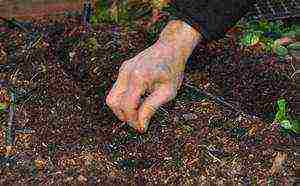 Sowing is done only with dry seeds;
Sowing is done only with dry seeds;- The site must be prepared in advance, dug up and grooves cut;
- Sow when the temperature is stable around 0 degrees and the soil freezes;
- After sowing, cover the furrows with dry soil and compact.
- If the snow has not yet fallen, then the plantings are covered with spruce branches, and after the snow has fallen, they throw in a snowdrift. When the snow has already fallen on the ground by the time of sowing, then it is raked, the usual podzimny sowing with dry seeds is carried out and the snow is shoveled onto the furrows.
In winter, planting requires almost no maintenance. Make sure that the wind does not blow snow from the furrows. In the spring, with the beginning of snow melting, spruce branches are removed, excess snow is carefully raked. The ground is covered with a film or non-woven material for the fastest germination.
Advantages and disadvantages of winter landing
When sowing carrots in the fall, you can:
- Get the harvest 15–20 days earlier than with spring sowing. Seeds undergo a kind of hardening in winter, and if the weather is not favorable and postpones the spring sowing of seeds, then the seeds under winter, protected by a film cover, will already sprout;
- Grow larger, more succulent roots. They get more moisture for development than with traditional sowing;
- Free up time in the spring for other work. A hot spring time for the gardener every day at a high price;
- If the seeds for some reason do not sprout, then you can re-sow in the spring and not be left without a crop;
- After harvesting early carrots, you can plant radishes, dill, lettuce in its place and get another harvest from the same land plot
But there are also disadvantages of planting before winter:
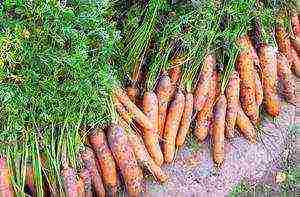 You can get a good harvest only if you choose the right time for sowing seeds in the fall. If sown too early, the seeds will have time to hatch and germinate, which will destroy them in winter;
You can get a good harvest only if you choose the right time for sowing seeds in the fall. If sown too early, the seeds will have time to hatch and germinate, which will destroy them in winter;- When sowing in winter, the likelihood of carrots leaving the arrow increases. When choosing seeds, preference should be given to varieties that are resistant to flowering;
- The seeding rate must be increased by a quarter;
- If the winter is warm, then the seeds may have time to hatch, and further frosts will simply freeze them. This is the biggest disadvantage of sowing carrots before winter, because it is impossible to predict what the weather will be like in winter, and abnormal winters do happen. In this case, you can replant the carrots in the spring.
And yet, the advantages of planting carrots before winter are more weighty than the disadvantages. Moreover, with the most unfavorable outcome, there is an opportunity not to be left without a crop anyway.
Attention, only TODAY!
We are used to sowing carrots in early spring in order to harvest generous harvests in the fall. However, not many people know that planting carrots before winter is very effective. This is a great opportunity to get early harvests of carrots.
Benefits of Getting Early Carrots
After a long winter, the body feels that there would be, by the way, salads with fresh vegetables. Breeders have bred early varieties, there are also early carrots. It grows as early as 8 weeks after sowing.
In cities, until June 10, early carrots grown in the open field appear on sale. Not all gardeners know, but if you plant carrots before winter, you can get a harvest much earlier by June 15.

The root vegetables will be juicy, sweet and large. The harvest can be more abundant than when sowing at normal times. Vegetables grow like this because in the spring the snow melts, it rains and the earth is abundantly moist.
With a good water supply, seeds germinate faster and root crops, saturated with moisture, grow large and appetizing. Carrots that are sown in winter are not stored for a long time, but this is not required. It is quickly used in salads, main courses and first courses.
Some gardeners strongly doubt that if you sow a carrot for the winter, it will withstand frosts and not only rise, but also give a bountiful harvest.
Some gardeners also think that planting carrots for the winter is useless because when they rise in early spring, they will quickly freeze after the very first night frosts.
Do not worry, the sprouts will sprout in due time in the spring and the gardener will receive a generous harvest. In addition, carrots were planted in the open ground or in a greenhouse before winter and other vegetables, for example, garlic, etc. They were covered with mulch and an earlier harvest was obtained.
How to choose the right place
The gardener must choose a good site for planting carrots, but, most importantly, do not forget to loosen it thoroughly by digging a shovel on the floor.
"Important. It is best to choose a place well-lit by the sun for carrots. Seeds should be planted in furrows, not combs. Spring waters can wash away these mounds, and with them the seeds. "
The root crop grows well in those areas where the gardener previously grew:
- tomatoes;
- cabbage;
- cucumbers;
- onion.
They harvest vegetables from that site, pull out all the stems, weed the weeds and try to pull out their roots. Next, you need to dig a site on the floor with a shovel. The mineral makeup can now be applied.
It is impossible to introduce organic manure in the form of fresh manure. With such given carrots, you cannot plant 2 g in that place. For sowing carrots, the area should be ready by October 15.
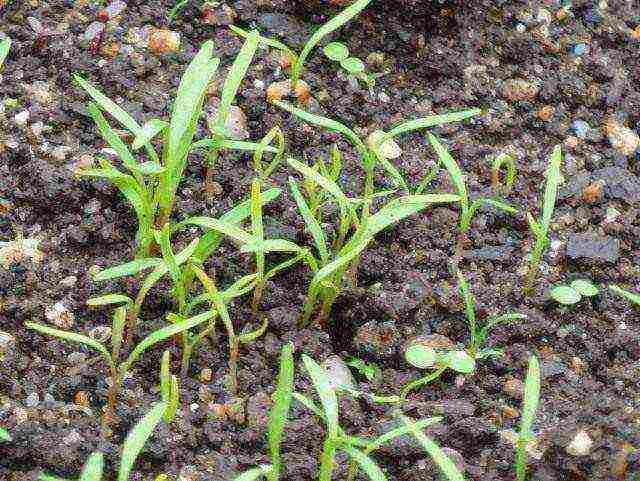
Better early carrot varieties
The gardener must remember that not all varieties can be planted before winter, but only early ones. They must tolerate frost perfectly. Most often these are local varieties related to early maturing, with mid-maturing.
The varieties have proven themselves well:
- vitamin-6;
- shantane-2461;
- Nantes-4;
- incomparable;
- Moscow winter A-545;
- Losinoostrovsky-13.
Planting dates for carrots
Seeds can be thrown into the ground just before frost. It depends on which region of Russia a person lives and when the cold comes there? It is important to choose such a planting time so that the seed material does not germinate before the cold weather and does not freeze.
Now it is clear why seeds are not sown in October. At this time, thaws come in central Russia and the seed can germinate. Frosts will hit and the sprouts will die. Therefore, it is optimal to plant from November 15, but it is possible later.
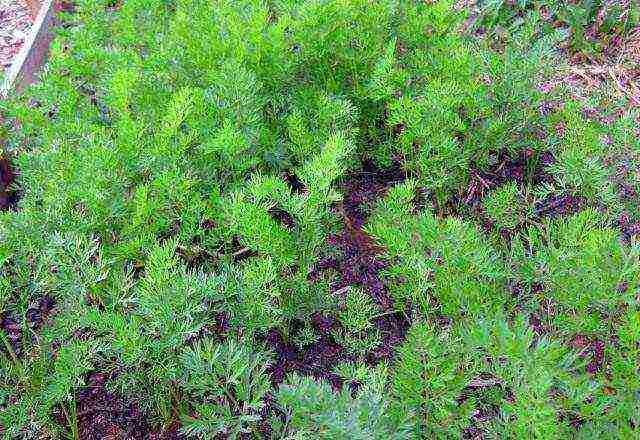
Sowing technology
Some gardeners make the mistake of pre-soaking the seeds before sowing for the winter. Now there is no task to germinate seeds so that they grow faster, on the contrary, they need to be thrown into the ground dry.
"Advice. Seeds are small and experienced gardeners use a special seeder to sow them. "
The video tells how to plant carrots before winter:
The planting scheme for the winter is as follows:
- Make 1 or 2 cm furrows in the area.
- Throw the seeds into the grooves and sprinkle on top with dry soil, which will be still warm.
- Peat or humus is poured on top of 2 cm and the soil is slightly compacted.
- Snow will fall, it is scooped up onto the rows and pressed with spruce branches.
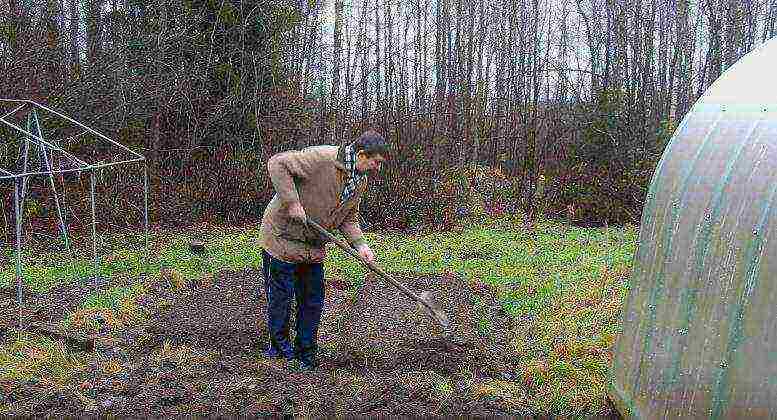
In the spring, the snow will melt and then the spruce branches are removed from the garden. Some gardeners install a mini greenhouse. It consists of arcs covered with plastic wrap. You can also stretch some material (non-woven). This will help the carrots grow faster.
After the carrots hatch, germinate a little, it is thinned out. It is important to weed the area from weeds in time, to loosen the ground.
The difference between winter planting of vegetables and spring
When carrots are planted before winter, the technology is slightly different from the spring one:
- The seeds are sown more densely and take more seed. Some seeds will not survive the cold and then rot. If the rake is thick, then the germination capacity is greater, and then the rows can be broken through, removing excess shoots.
- In the fall, the seed does not need to be germinated first, as in the spring.
- In spring, the owner will quickly determine where the carrot is growing if he sows a radish nearby. He rises first.
Care methods for carrots planted in autumn, spring
Vegetables that are sown in the fall need to be vigorously tended in the spring. Rake the snow and sprinkle the area with a thin layer of peat. The sun's rays will warm it up and it will give heat (and later nutrients) to the seeds, wake them up.
In the spring, the carrot planted in the fall for the winter will wake up and begin to grow actively. It is best to make a small greenhouse over it by placing arcs, stretching them with film or other non-woven material.
In a greenhouse, the sprouts will be more protected from temperature extremes, cold winds, and the gardener will get a harvest faster.
This is a vegetable known since ancient times, but then its taste was very different from today's sweet and juicy, for which we value it so much. It is a widespread vegetable with a beautiful orange color. In addition to the most famous orange-colored varieties, carrots also have white, yellow, and even deep purple varieties.
Growing carrots is pretty easy and even a novice gardener can handle it. Therefore, if there is such an opportunity, it is better to grow it yourself - carrots from your own garden are the healthiest and tastiest.
When planting carrots as seeds in open ground
Depending on the variety, carrots are bred at different times. Early and middle early varieties for spring and summer harvest are planted in late March and April. Designed for autumn harvest - in May and early June. It should be sown in rows of 20-30 cm, at a depth of 1-2 cm. The soil should be moist, best done on cloudy days. To make sowing easier, the seeds can be mixed with sand.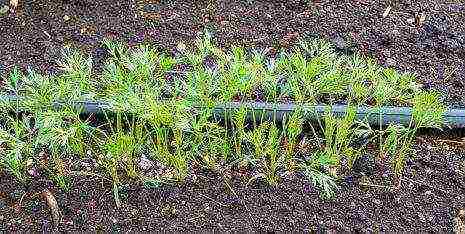
Since carrots take a long time to grow, weed problems often arise. A good way is to add carrot seeds to these seeds, which germinate very quickly.For example, radish or salad. This way you can easily determine where the carrots are growing. Then, without any worries, you can pluck unnecessary plants and free the beds from pests.
Planting carrots according to the lunar calendar 2018
The best time to plant carrots is from April 17 to 22 and April 1 to 7. Avoid sowing, planting, and transplanting carrots between April 8th and 15th. The best time for planting root crops is from 1 to 6 April. The time from 17 to 21 is also a good period for spring grafting.
Seedling care (cutting plants, killing weeds, pests and plant diseases) is best done between April 9 and 15. Land-related care activities - power supply, watering, irrigation of plants - from April 16 to 22 and from April 24 to 29 . Work on the beds is best done from 2 to 15 April, especially favorable days from 9 to 15 April.
Good results in the cultivation of carrots are given not only by the timing of planting and care, but also by the general conditions for growing vegetables.
Recommendations from manufacturers
In our country, spring sowing is most often used for early harvesting. Soil preparation must be very careful and carried out in accordance with the manufacturer's recommendations. Harvesting for spring sowing usually occurs at the beginning of June, and if you do not use a shelter, at the end of the month. The final harvest date is also greatly influenced by weather and rainfall.
Carrot seeds should be sown at a density of 1.0-2.0 million seeds per hectare. However, growers make their own recommendations regarding the standard for planting individual varieties. For example, variety Caliber F1 should be sown at a density of 1.5-1.8 million seeds per hectare, and variety Espredo F1 - 1.5-2 million seeds per hectare. Sometimes the recommendations differ significantly from the generally accepted ones. For example, it is recommended to sow seeds in rows of 15 cm even at a density of 6-10 million / ha, which results in a carrot length of about 15 cm and a diameter of 2 cm. germination. Do not increase seedling density, especially when grown for an early harvest. Because too much plant density causes slower growth of root crops. It was found that an increase in the seeding rate from 1 to 2 million / ha can lead to a delay in the harvest by as much as 10 days.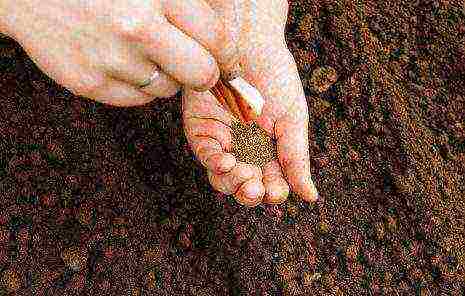
Depending on the region (Moscow region, Krasnodar, St. Petersburg, Siberia, Ural)
The most suitable period for planting carrots in spring is when the average daytime air temperature will not drop below 10 ° C. But here it is also necessary to take into account the variety - some varieties of carrots calmly tolerate temperatures up to 6 ° C.
So, the optimal time for planting carrots in the Urals is the end of April. Moreover, this indicator is valid for the southern regions. In the northern regions, it is better to start planting carrots no earlier than the end of May (the minimum daytime air temperature should not be less than 5 ° C.
In the Moscow region, it is better to start planting root crops from the second half of April. You can do this later, but then the yield may be lower. For Siberia, the optimal period will be late April - early May. For the Krasnodar Territory - mid-April. For the Leningrad region - in early April, as soon as the snow melts.
How to plant carrots outdoors
Carrots are a biennial plant. In the first year, she creates a root and leaves, in the second - a stem and an inflorescence. In our gardens, it is grown as an annual plant because the edible part is the root. We can grow different varieties: early, mid-early, medium, late and very late. It is sown directly on the ground. Usually grown as the main crop because it is a vegetable with a long growing season.
Choosing a landing site
Carrots prefer sunny locations because the sun's rays have a positive effect on the beta-carotene and sugar content of the roots.High yields are observed on sandy-loamy soils with a high humus content. The nutrient requirements of carrots depend on the soil in which they grow. Usually these requirements are average, but if the soil is rich in humus, carrots may have low nutritional requirements. Slightly acidic soil is most suitable for carrots, it does not like alkaline soils, especially calcium.
Seed treatment
For cultivation of edible carrots, seeds with a high rate of disease and pest free, with the highest possible germination capacity should be used, which guarantee faster and more uniform germination, seed plant growth and a higher yield. They must be purchased from certified organic farms, from plants that have been cultivated for at least one generation of organic production.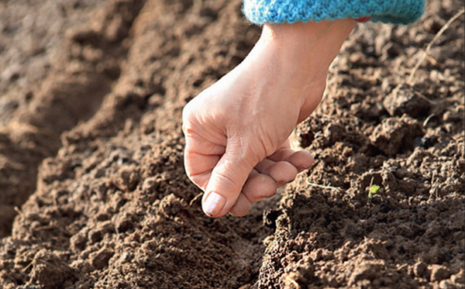
These seeds are not treated with chemical solutions - processing by conditioning in water or using biostimulants is more favorable for them:
- Bio-Jodis (1%, 1 ml / 100 ml water);
- Titanite (0.4%, 0.4 ml / 100 ml water);
- GoemarGoteo (1%, 1 ml / 100 ml water);
- Physpe (1%, 1 ml / 100 ml water).
The treatment is to soak the carrot seeds for 4 days at 20 ° C in airtight containers. After processing, the seeds are sown in the field. They can also be dried in a ventilated room at temperatures up to 20 ° C 10-14 days before sowing. Such prevention accelerates seedling emergence and improves their uniformity. The faster the seedlings grow, the higher the ability to resist weeds, and weeding becomes easier. Processing favorably affects the growth and productivity of plants. Bio-processing also improves seed and plant health during the early stages of growth.
Another effective and simple way to improve the health and quality of carrot seeds is treatment for 20 minutes in a biological environment: bioiodine, titanite, GoemarGoteo, Physpe (in the above concentrations) and EM, Biosept 33 SL or Grevit200 SL (according to the manufacturer's recommendations on label).
Treatment also has a positive effect on plant emergence, health and early growth.
Soil and bed preparation
Providing carrots with the right conditions is very important because under unfavorable conditions, their roots can break and develop incorrectly. The root fork occurs when we grow carrots in too heavy soils with elevated water tables. For this reason, cultivation in beds is beneficial in heavy and clay soils, which provides carrots with better conditions for growth and development, and also limits the development of weeds and pests.
Abnormal fruit development can also be caused by cultivation immediately after using the manure. The soil should not be overdried, as too high fluctuations in humidity can also cause abnormal development of the roots and the carrot fruit itself.
Landing methods and schemes
The easiest way is to plan according to how much space there is and what kind of vegetables we want to grow. Then you can choose the type of location that suits you best and organize your garden according to your plan for the next few years. In addition, before planning a site for growing carrots, you should pay attention to the following points:
You may be interested in:
- Depending on the nutritional requirements of the plants - in this system, carrots should not be planted in the same place more than once every three years. Carrots belong to the group of plants with medium nutritional requirements, so they should be planted after plants with low nutritional requirements;
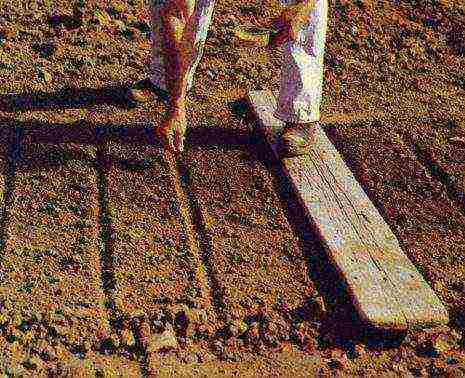
- Depending on the compatibility of the plants - due to this, the appearance of diseases and pests suitable for the given species is eliminated. Carrots belong to the umbrella family, so they should not be planted in the beds where plants of the same species grew last year;
- Depending on the division into roots, leaves, flowers, fruit and other plants - carrots as a root crop should not be planted after other root crops. It is best to plant it after deciduous plants;
- Depending on the depth of root germination, carrot roots germinate quite deeply, so it should be sown together with plants with a shallow root system.
To plant carrot seeds on toilet paper, you will need paper, plastic, a spray bottle, and a small jar. First, prepare the seedling base - cut the plastic or film into strips about 10 cm wide.Then put toilet paper on top and moisten it with a spray bottle. After placing the carrot seeds on the film, roll the tape into a roll and place in a jar, pour in some water and leave for a few days. After germination, the seedlings can be transferred to the beds.
To facilitate planting seeds in the soil, you can use a regular egg tray. It is very easy to obtain the same holes of the required depth and at the same distance between each other - it is enough to press the tray into the ground.
Planting seeds with sand is recommended in cases where thinning of the soil is not possible. To do this, mix one bucket of sand with two tablespoons of seeds. Sprinkle the mixture over the furrow and cover with a layer of soil. Immediately after this, the beds must be watered abundantly with water.
An excellent solution for planting seeds is starch paste. To do this, 30 g of starch must be dissolved in 1 liter of water. After that, the resulting mixture is heated and seeds are added to it. For 1 liter of such a liquid, you need to use about 100 g of carrot seeds. The resulting substrate is poured into the beds and moistened.
After what crops can carrots be planted
When growing carrots, it is extremely important to consider the condition of the soil. It should not be planted in the same place more than once every 3 years. The same applies to planting on plants from the same family, that is, celery (celery, fennel, parsnip, parsley). This prevents the phenomenon of soil fatigue and reduces the risk of diseases and pests on our crops.
Carrots have average nutritional requirements. It is best grown with shallow-rooted plants because the roots of carrots take root quite deep. A company of onions or garlic will suit her. These vegetables reduce the appearance of carrot pests. Carrots also thrive in the company of peas, leeks, tomatoes, radishes, and herbs such as peppermint, sage, or marjoram. Plantations are well influenced by planting strawberries because they reduce the incidence of gray mold.
In co-cultivation, onions are the best neighbor for carrots - this reduces the risk of infection. Carrots can also grow in the company of leeks and fennel. Dill essential oils keep pests away, so in this case tomatoes are not recommended as neighbors.
Shelter after landing
To improve the microclimate on the plantation, it is recommended to cover the beds after planting. Covering the field with foil or agrotextile protects young plants from the wind, which can reduce the temperature of the plant by a few degrees, as well as reduce water loss and improve growth.
For short-term coverage (2-4 weeks), foil with 100 holes per 1 m2 is used, foil with 400-500 holes can be left for longer. The number of holes in the foil per 1 m2 determines the penetration rate of air, steam and water. The more holes there are in the foil, the easier it is for water and air to penetrate, but the temperature will be lower. With a foil with few holes on sunny days, an increase in temperature causes strong evaporation, which, together with a decrease in air temperature at night under the foil, causes condensation.
The application of such a coating on very wet soil is not recommended, in particular due to the relatively slow evaporation of water.Then a certain microclimate is created, in which during the day there is a relatively high temperature and humidity of the air and a low temperature of the soil. As a result, seeds germinate later and become more vulnerable to fungal infections. The most commonly used perforated foil with a density of about 45 g / m2. Agrotechnical fabric protects plants about 2.5 times less, since it has a lower density - 17-19 g / m2.
At noon in March and April, the use of foil can raise the air temperature by up to 10 ° C. The air under the agrotextile warms up by 1-5 ° C. Thanks to this, agrotextiles can be removed later - it does not threaten plants with burns under the intense solar radiation that occurs under the foil.
Care and cultivation of carrots
For carrots, soil with a pH of 6.0-6.5 is most suitable. Remember that liming the soil, which is usually done for this purpose, does not need to be done in the same season in which you want to grow your carrots. Such treatment should be carried out at least one year before sowing carrot seeds.
Watering
Carrots have a medium moisture content. Watering should be done carefully. In normal sunny weather, during the ripening period, it is necessary to water three times a week, using about 4 liters of water per 1 m2. Then you should do this no more than once a week, but with plenty of water.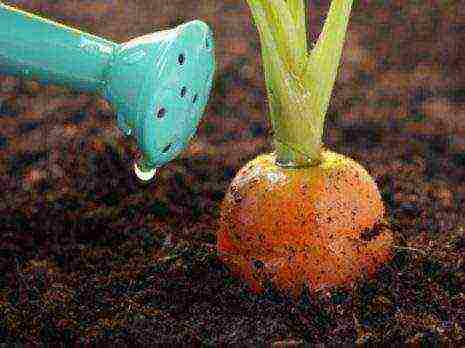
Weeding and loosening
Weeding is an important treatment for carrots, especially during the first period of growth - it is most effective against weeds. But it can significantly hinder proper growth and reduce the yield of carrots. It is best to carefully pull the weeds out by hand to avoid accidentally hitting or removing the carrots. In places for weeding, you can, for example, plant a path of carnations.
Thinning
Thinning the soil between the beds requires special attention and care. It is important here not to catch the plants themselves and not to damage the roots. Thanks to this, the carrots grow in an even, ideal shape, all the same.
Top dressing and fertilizers
Mineral fertilization of carrots should be carried out based on the results of a chemical analysis of the soil. The optimum pH is 6.0 to 7.0. The approximate dose of individual nutrients in moderately rich soils is:
- H - 70-120 kg / ha;
- P2O5 - 60-80 kg / ha;
- К2О - 150-200 kg / ha.
Moderate nitrogen fertilization is effective when growing carrots. Its amount should be between 60 and 80 kg / ha. On the other hand, for the industry - the production of juices, frozen or dried fruits, the amount of fertilizers is 80-100 kg / ha. However, for direct consumption and storage, depending on the location and variety, it is advisable to use 80-120 kg / ha.
On alkaline soils, ammonium sulfate can be used. These fertilizers are distributed prior to carrot cultivation. In weaker zones or when growing late varieties, the amount of nitrogen can be divided into two doses: preliminary 80-90 kg / ha in the form of urea or ammonium sulfate and then 30-40 kg / ha (4-6 weeks after sowing) in the form of ammonium nitrate ...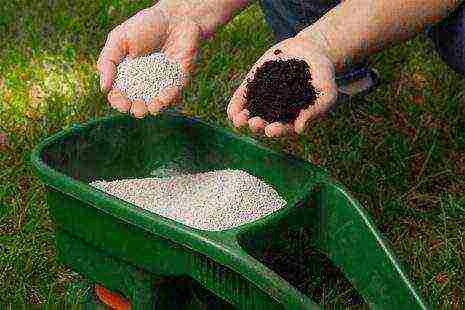
Phosphorus-potassium fertilizers should be used in the fall (in the year preceding cultivation). For phosphate fertilizer, triple superphosphate is recommended. Potassium fertilizer can be used in the form of potassium salt. The optimal dose of potassium in the soil contributes to the best coloring of the carrot roots.
Diseases and pests of carrots
Cercosporosis - The signs of the disease are mainly visible on the leaves and are in the form of elongated brown spots. Severely infected leaves turn brown and die off. The disease is alleviated by leaving plant residues in the field after harvest.
- decontamination of tools and containers used in growing;
- precise removal or plowing of plant residues;
- sowing healthy seed;
- antifungal spraying with herbal preparations.
Powdery mildew - white spots on the leaves, covered with powdery small black spores. Over time, the spots expand and the infected leaves are brown and dry out. Plants infected in the early stages of growth die completely. The disease is stimulated by warm and moderately humid weather. Prevention:
- removal or deep plowing of plant residues after harvest;
- sowing healthy seed;
- monitoring changes.
Brown leaf spot - the disease mainly attacks the oldest leaves, manifests itself in brown spots. Infected leaves quickly turn brown and dry out, roots weaken and yield decreases. The disease develops in humid and warm summers, also due to the use of a contaminated instrument. Prevention:
- monitoring changes;
- removal or deep plowing of plant residues after harvest;
- disinfection of tools and containers used for the care and harvesting of vegetables;
- acceleration of sowing dates
- cultivation of varieties with increased disease resistance.

